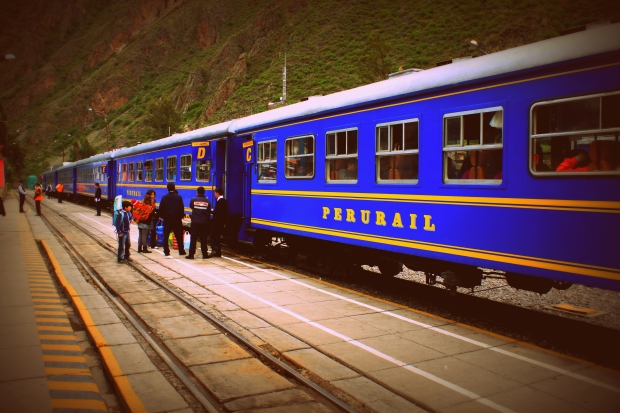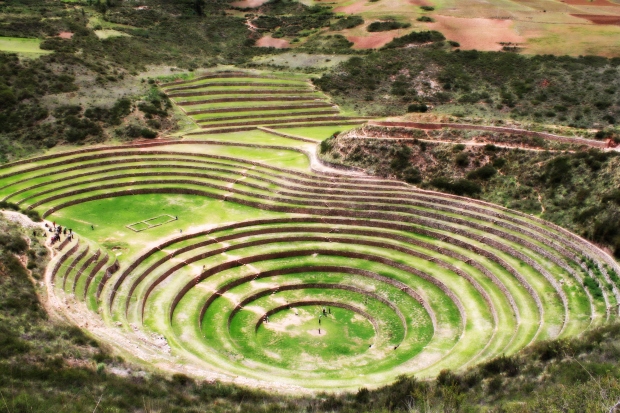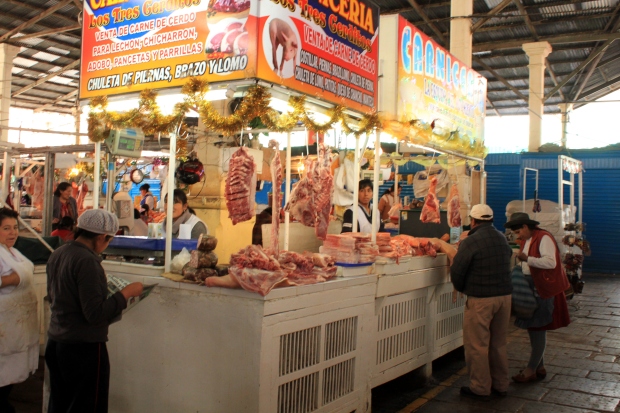It took months of planning, conference calls, flight searches, and a handful of vaccinations before we could set forth on a trip to South America. Seven people – lets call them SS, AJ, TK, AK, VP, AP and me, were debating between Brazil, Peru, Argentina and Bolivia for a 10-12 day trip over the Christmas vacation of 2012. We finally chose Peru, primarily for Macchu Pichu, and Brazil, for its beaches and the Amazon forest.
We uninhibitedly chose December 21st, 2012 as the day of departure from our respective cities. After my airport adventure that afternoon, I met VP and AP at the Miami airport. We were to fly to Lima, and then reach Cusco the following morning. I had taken a few weeks of online Spanish lessons for basics like asking for directions and talking to the cab driver, the hotel receptionist, shopkeepers etc. And now it was time to put them to use with the lady at the taxi counter at Cusco airport. After a couple of minutes of price negotiations in broken Spanish, we hopped into a taxi for a 2 hour scenic drive to Ollantaytambo (Oll–yaan–taay–taambo). The cab driver was quite talkative and we tried our best to follow him. He was very happy to know that we were from India because he loved the Maruti Alto. And there were Altos all around us on the roads! While we were on our way to O, the others coming from the West coast encountered long flight delays and ended up reaching that evening, exhausted from the additional 15-hour ordeal.
We checked into hotel El Albergue, which is quite strangely, placed right beside the platform at the train station there. It’s a lovely little rustic hotel and it was great to be able to relax after the long journey.

Station next to El Albergue

Outside the station
O is a really small but extremely scenic town, with the Urubamba river flowing by through the mountains, and greenery all around. At a distance we were able to spot a few ruins too. We returned to the hotel, and booked a couple of tours for the next day. In the evening, we were looking forward to taste a few local drinks and food! We started off with Pisco Sour, which is a refreshing drink made up of Brandy, lime juice, egg white and Angostura bitters. After a few drinks, we found ourselves sharing stories from college, laughing out loud and most likely disturbing the other guests! This carried on for a couple of hours, and after dinner we retreated back to get some sleep and be ready for a fun day of touring the places around O.
Our guide and driver for the day did not speak English – Spanish lessons to the rescue! Our first stop was the salt ponds of Maras. The views on the way were breath-taking, and reminded me of the Bajaj Avenger advertisement shot in Ladakh! Taking a detour onto a dirt road, we reached the entrance to the salt ponds. They are terraced on a hill and were used by the Incas to gather salt from the deposits after evaporation. We walked right down to the area, balancing along the edges and a couple of people also tasted a bit of the salt!




Next stop was a set of ruins at Moray. These concentric circles of terraced walls were used for farming and made for great views from the top.

It was noon and we headed out for lunch to a popular buffet place at Urubamba. The spread was huge, with all kinds of meat and Peruvian delicacies. SS tried out some Guinea Pig meat!
We got back to the hotel, packed our bags, checked out and stored our bags at the Peru Rail counter because they did not let us carry more than 5 kgs per person on the train! Quite a silly policy to enforce on tourists but nevertheless, we were okay with it as long as they agreed to keep our extra luggage. Also, they were kind enough to put us on an earlier train which meant we would be able to travel during day time and enjoy the views, and get to Aguas Calientes (A.C.) reasonably early.
Once at A.C., we walked through a market and shopped for some knick-knacks. At one of these shops, when the lady told me that the price of two things I picked up was going to be 25 Soles, I mistakenly asked both for 5 (cinco) in Spanish, where as I meant 15 (quince)! Major gaffe! She rattled off a few curse words while everyone around burst into laughter. I apologized and finally got the stuff for 20. Phew!
A.C. is bigger than O and unique because it has a river flowing right in the center of the city dividing it into two, with bridges every few metres on its main road! We spotted a bakery and were keen to eat a popular variety of bread, which is what the locals buy a lot during the Christmas season. Next, we bought bus tickets for our ride to the Macchu Pichu site. We also hired a guide for the M.P tour the next morning. We checked into our hotel, and went out for dinner. Most of the streets in A.C. are just steps that go up and down a hill. We took the easy way down, and got into a bar. After sufficiently toxicating ourselves and playing darts and Jenga, we looked for some food. Similar to hawkers in India asking tourists to buy stuff, waiters in Peru restaurants stand outside inviting people, and offering free drinks. TK was accosted by one such guy earlier, so we decided to head there for grub.
Next morning, as usual TK and AK were late. We started calling them the late-latif couple! We met our guide Paul and left the hotel around 6:45 in the morning, and were late for the bus considering we were to assemble at MP for the 7 am hike. Upon arriving at the bus stop we realized that our MP entry tickets were just reservations, and that we needed to get real tickets from the city center!! We scampered and got them and finally boarded the 7:30 bus. The bus ride was through a narrow set of curves up the hill, and getting us almost into the clouds. It was drizzling a bit, and quite serene all around. We got to the MP site around 8:15, and rushed towards the entry. We had planned to hike the Huyana Pichu mountain and were in the 7-8 batch for entry. We just made it to the hike entry gate at 7:55.
Up ahead was a tough, exciting and sometimes nerve-wracking hike. Huyana Pichu is a mountain to the north of the MP site. The trail was made up of stone steps laid out steeply and curving around one side of the mountain with a rope railing on the side at times, and few feet of drop on the other side. To add to it is the constant rain making conditions slippery. Plus the altitude of the place is about 15,000 feet which means oxygen is quite depleted. The key was to hike slowly, take frequent breaks, and just enjoy the views as we climbed upwards. AK was feeling sick because of the altitude, and Paul asked her to pop in a Diamox (medicine for altitude sickness) and a banana, and within a few minutes she was all set. As we reached closer to the top, we had to crawl in through a cave. Time for body contortions! When we did get to the top after about 75 minutes of hiking, the views were spectacular – totally worth the hike! It was like we were in the middle of clouds and as they parted MP made its majestic appearance.

At the top of MP

Clouds!

Macchu Pichu
We spent a couple of hours at the top admiring the beauty of our surroundings, taking pictures, and trying not to slip and fall!
Around 11, we decided to climb down. This didn’t turn out to be very easy, especially for me, given that the steps were steep and if you missed one there was a pretty big and hard fall to take! I probably took more time to get down than going up 😉
Paul took us around the MP site, stopping at the important places, explaining how people lived here many centuries ago. We saw the Inca houses, their irrigation system, temples, and understood how they built stuff, their trapezoidal windows, stones cut at specific angles, customs and beliefs. I found it fascinating, while few others felt sleepy ;). Paul also spoke about the various Inca kings who ruled, legends about how MP was “discovered” by Hiram Bingham and how some myths exist about the Incas being involved in human sacrifice. It was like a history lesson, but we were right in the middle of where it all happened, and I was constantly thinking about how it would have been to live there in those times!
We took a break for lunch and went back to explore some more. We took the bus back to A.C and had a train to catch in the evening to Cusco. Paul left soon after and was going to meet us at Cusco the next morning. Remember we had stored our bags at the Peru Rail counter at O, so we had to pick those, and with the train stopping at O for just 3 minutes, we were required to be super fast. As we approached O, we got ready to jump out, and rush to the counter. As we ran, from the corner of my eye I could spot a few bags laid out in a straight line against the wall. Screeeech…! We stopped, and found that the awesome people at Peru Rail had kept our bags outside so that we could just pick them up. So thoughtful of them to do that, and that’s why I nominate them as the best customer service company – EVER! 🙂
We reached Poroy station at night fall, bargained with the cab drivers and reached Cusco city center in a few minutes. The street where the hotel was located was bustling with people – it reminded me of Bangalore’s Brigade Road, with shops on either side, and a sea of people, minus the cars! We checked in, and found out about good places to go get dinner nearby. By this time SS had developed a cold, so a couple of us went to try and buy some medicines. We had fun explaining to the chemist girl what we needed, and ended up enacting a person blowing their nose! 😉 On the way back we passed by several groups of people surrounding tables and seem to be playing a game. We peeked in and saw a gambling frenzy going on with kids, youngsters and elderly all having fun. They were basically playing the Peruvian version of roulette, minus the wheel. People placed bets on images of animals, and based on the cards dealt would either lose everything or multiply what they bet. It was fun to watch! Later we went to a nice restaurant called Tupananchis.
Next day was Cusco city tour. Paul met us at our hotel, and we first visited the Cusco market.

Fruit stalls

Chicken Soup

Special Bread

All kinds of meat
Back at Cusco center, the beautiful cathedral was closed, so we could not go inside. However, there was a local cultural procession going on.

Cathedral

Pachukuti, a famous Inca


By this time we were hungry souls but had to walk quite a distance for food, because most restaurants were closed. Paul knew about a local place, so we headed there. On the way, met some llamas too!


We arrived at a restuarant called La Cusquenita. Here, we had some more Pisco sour and other local drinks. The food looked and tasted delicious, and we all over ate. The after effects were to be felt later!
We then took a cab to see Saqsaywaman (saak–saay–waa–mun, not sexy woman ;)). It is a smaller replica of the Christ the Redeemer status in Rio de Janeiro.


And we also got some great views of Cusco from there.

We started heading back to the city center. Paul took us to a chocolate museum, which was interesting. And we said our goodbyes to him. He was very helpful to us on the trip, and made it a lot of fun and informative. A good, English speaking guide is highly recommended!
Next morning we had flights to catch to Sao Paulo. So we had dinner, spent some time at Cusco center which was brilliantly lit for Christmas, and felt a touch sad about leaving Peru – its beautiful locales and extremely friendly people. At the same time excited about visiting a new country – Brazil. That will be the next post.























